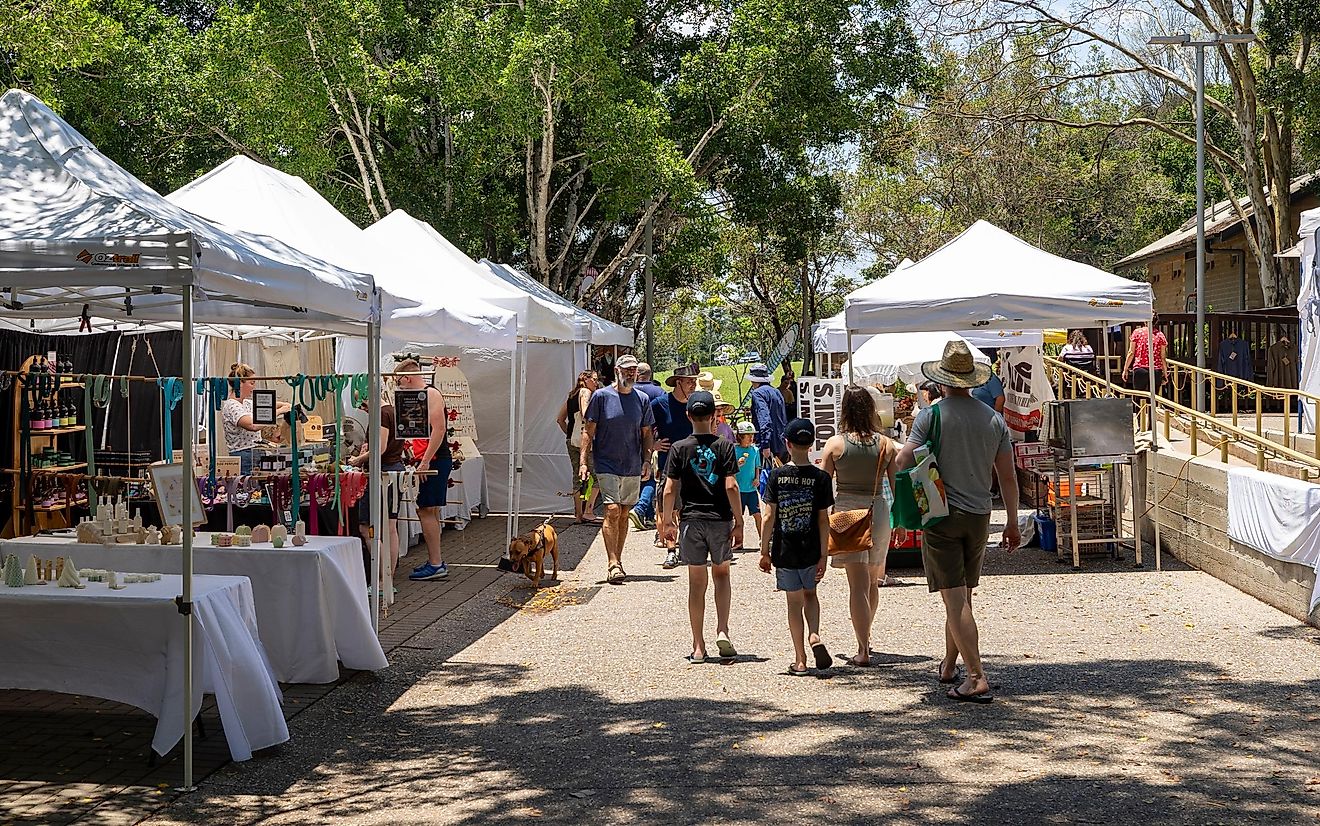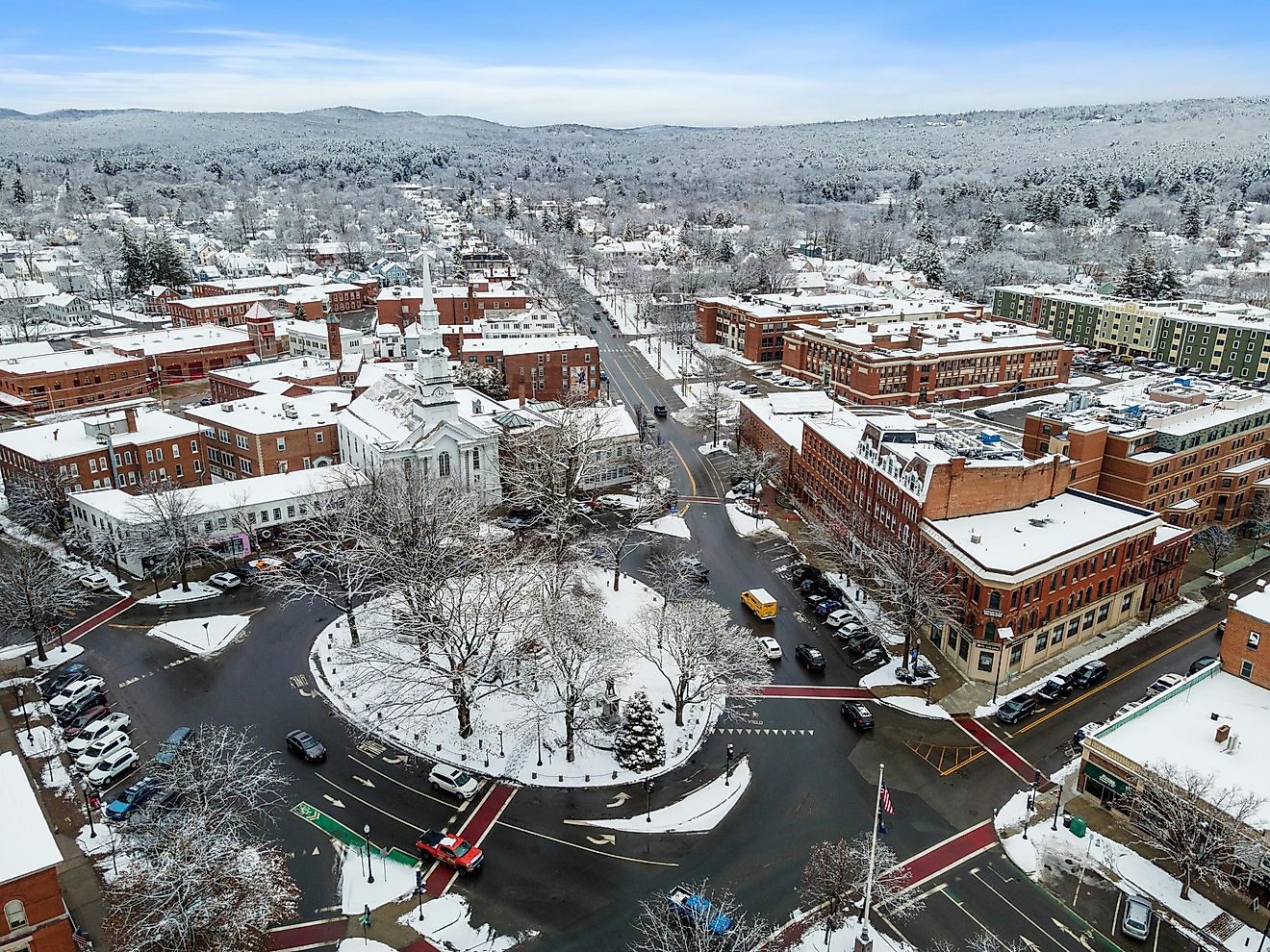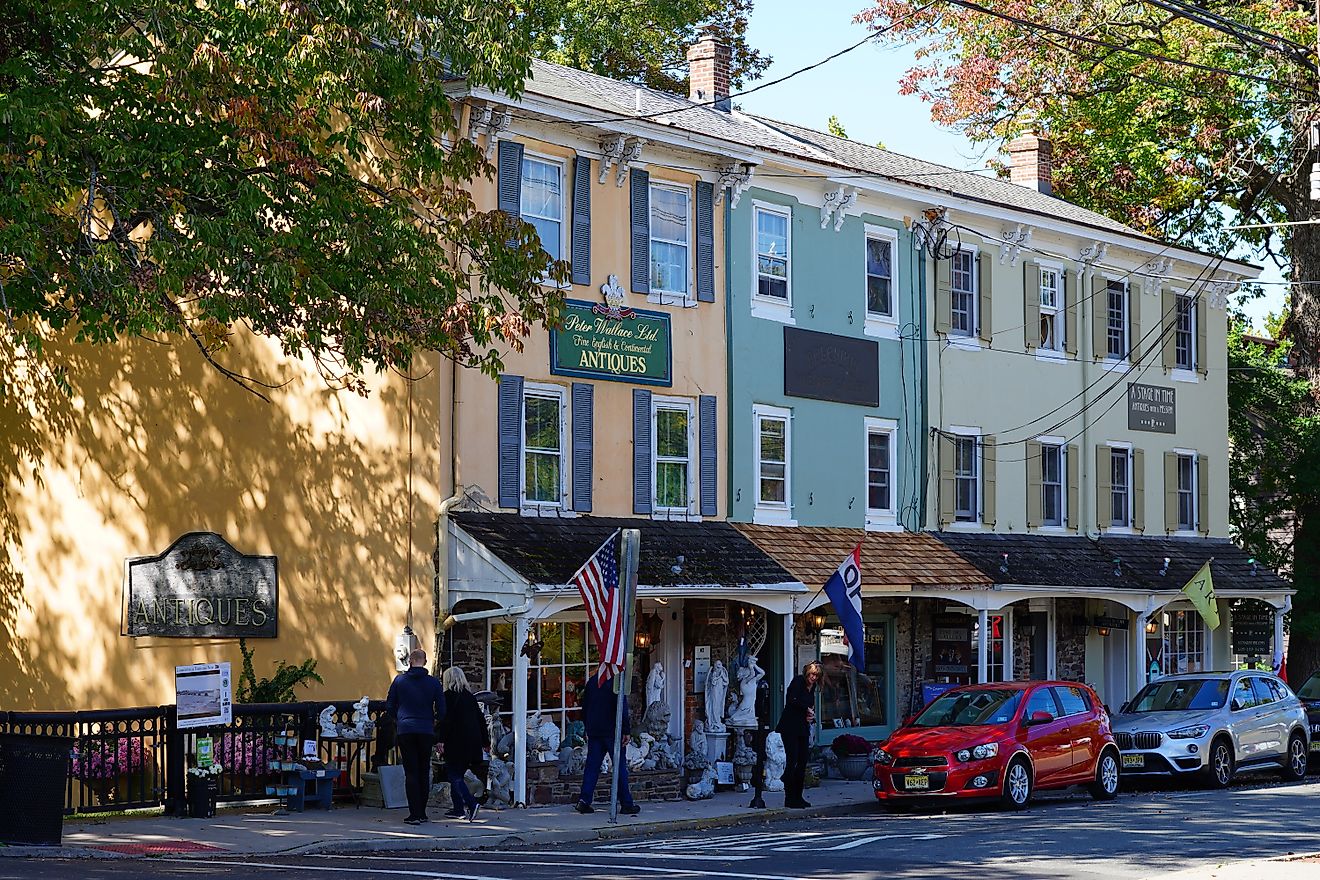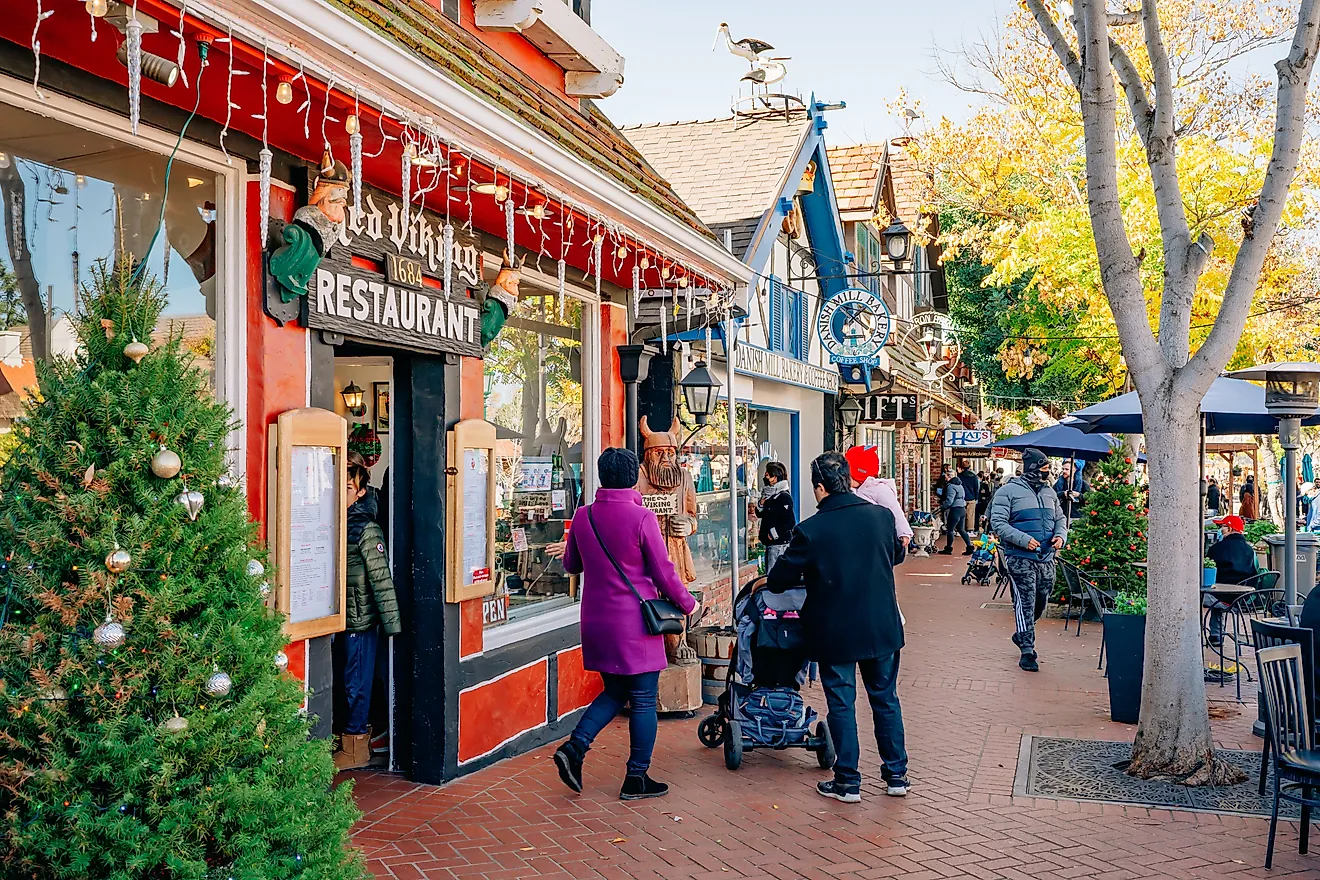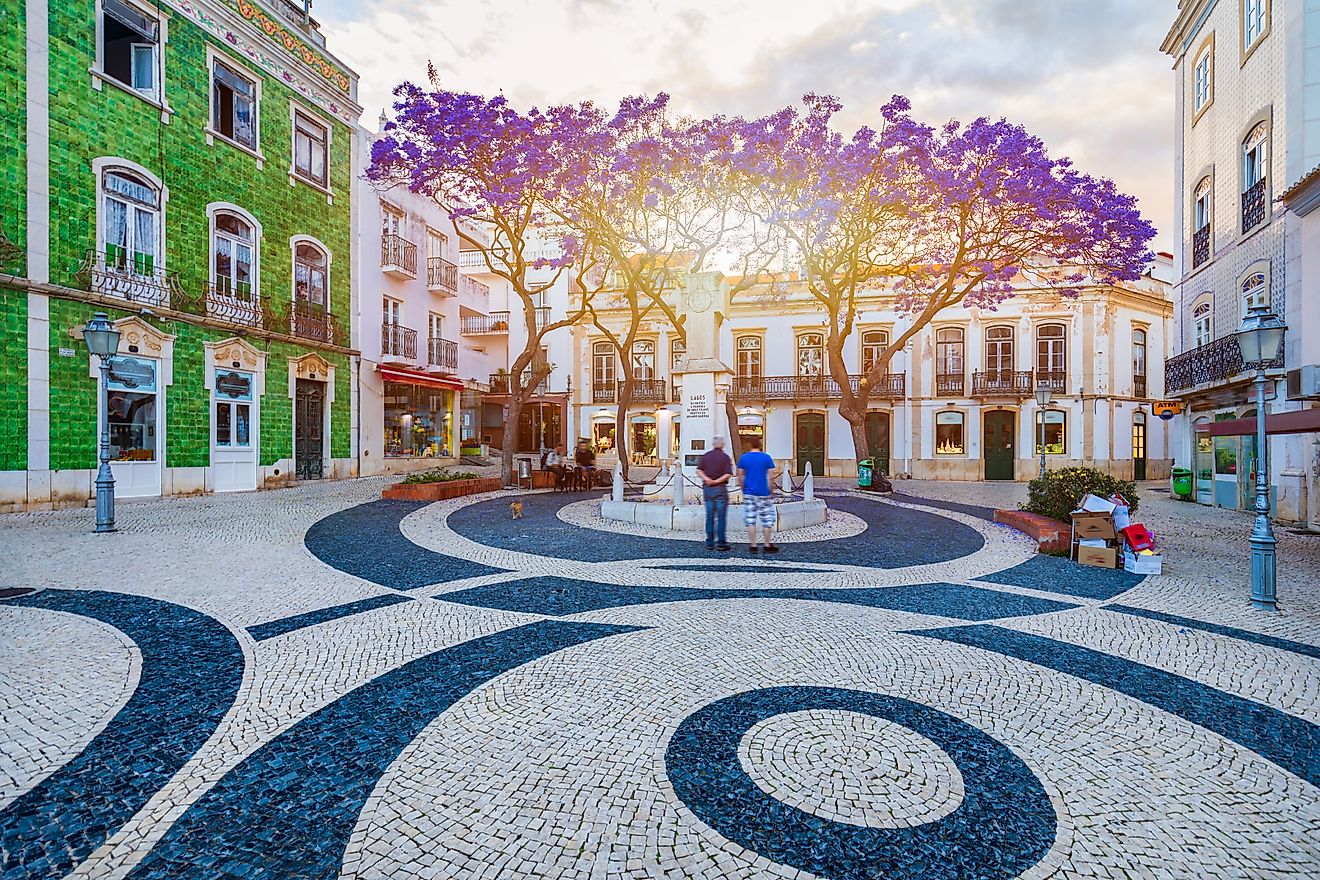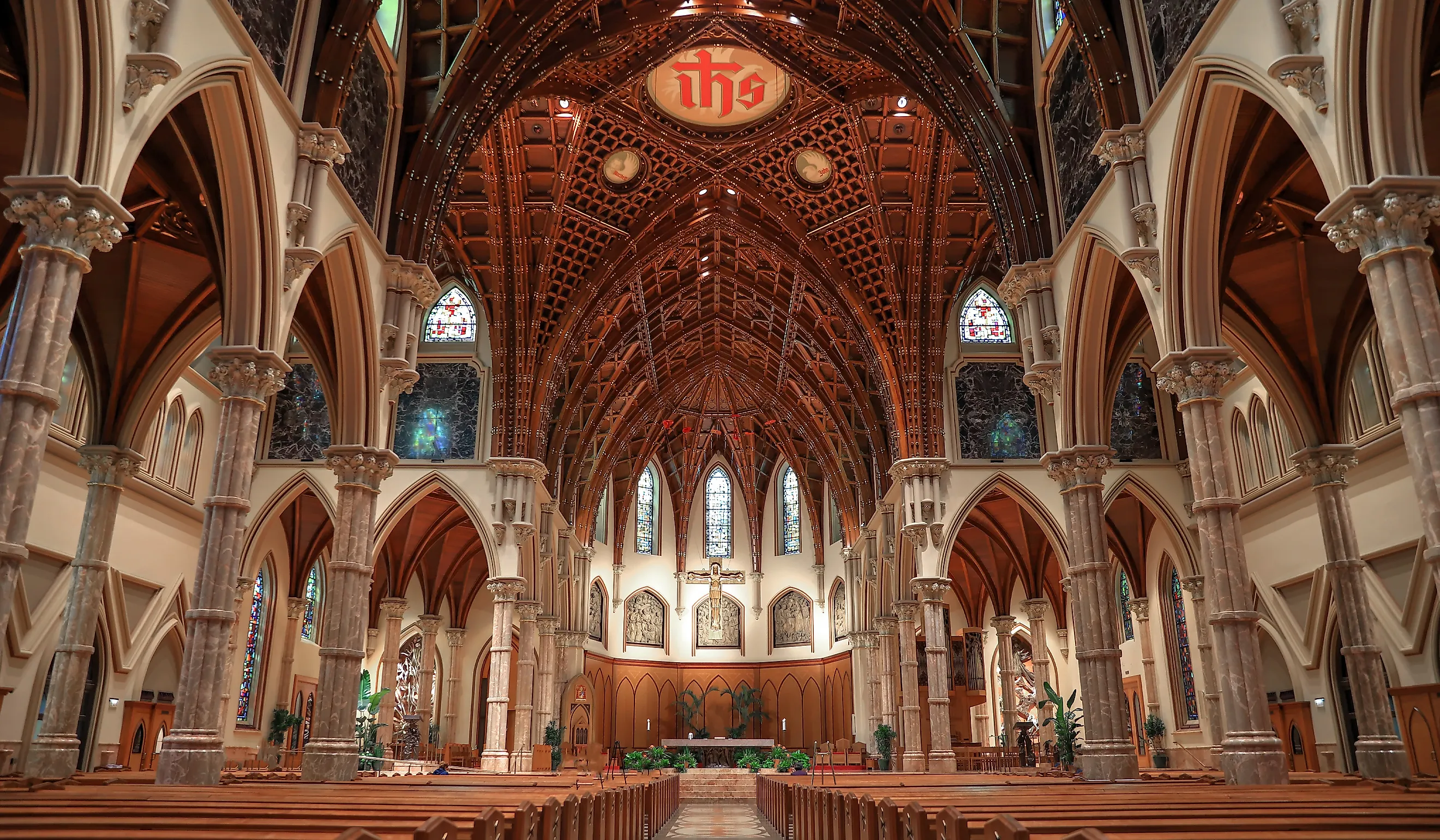
5 Most Beautiful Gothic Churches In Illinois
What is it about Illinois’s Gothic churches that has captured our imagination for so long? Gothic architecture, defined by pointed arches, ribbed vaults, and stone towers, reemerged in Illinois during the 19th century as builders adapted European designs to local materials and craftsmanship. By the mid-19th century, English church design was spreading through the American Midwest via architects trained in the Gothic Revival who sought to recreate Europe’s great cathedrals in the developing towns of Illinois. Whether they are Carpenter Gothic country parishes or Collegiate Gothic academic chapels, these churches combined faith and craftsmanship in building new communities on the American frontier. Today, they remain both places of worship and architectural classrooms where liturgy and craftsmanship continue to meet. The following 5 churches are among Illinois’s best remaining examples of this timeless style.
Holy Name Cathedral, Chicago
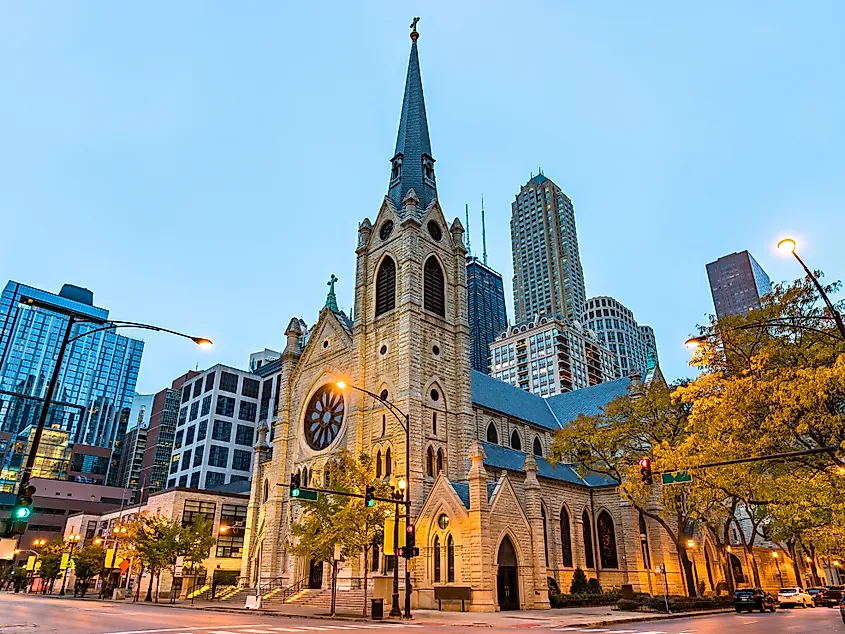
This cathedral was built in response to the Great Chicago Fire of 1871. This is where you will find the headquarters of one of the largest Roman Catholic archdioceses in the United States. Designed by Patrick Charles Keely in the High Victorian Gothic Revival style, Holy Name Cathedral has inspired parish designs throughout Chicago. Located along State Street in the city’s Gold Coast, the limestone structure rises 210 feet and features pinnacles and arched portals symbolizing renewal after the fire. Inside, a hammered beam oak ceiling depicts flames recalling the Great Fire, while tracery and clustered piers create a strong sense of vertical movement and living faith.

Visitors may take weekday or Saturday docent-led tours, which must be booked at least five days in advance, to see the Casavant Frères pipe organ, Austrian stained-glass windows, and relics of Saints Peter and Paul. In celebration of its 175th Anniversary Jubilee Year (2024-2025), Holy Name Cathedral will hold a year-long program of events, including the St. Cecilia Sing Along, a piano recital by Natasha Stojanovska, and special liturgies honoring its founding in 1849. These events demonstrate how the Cathedral remains both a place of worship and a living museum of Chicago’s religious and artistic heritage.
Rockefeller Memorial Chapel, Chicago
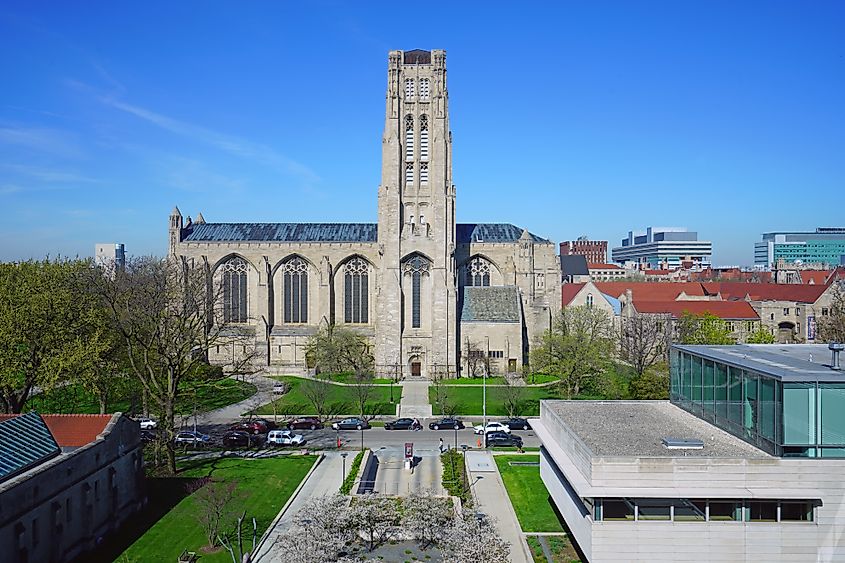
At the University of Chicago, Rockefeller Memorial Chapel stands as one of the finest examples of Collegiate Gothic architecture in the nation. Designed by Bertram Grosvenor Goodhue and completed in 1928, it was the final gift of the richest American in history, John D. Rockefeller Sr., to the University. The tower, rising 207 feet, dominates the campus skyline and remains a symbol of craftsmanship and purpose.
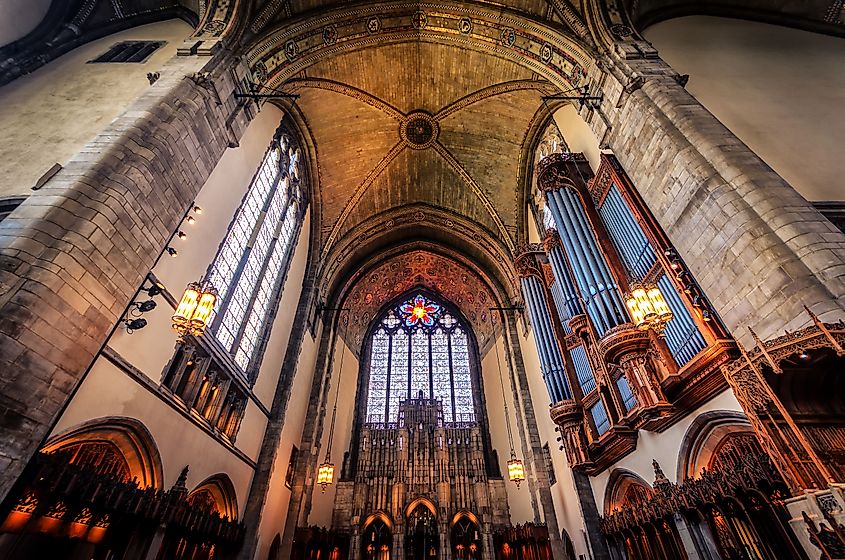
The exterior features more than 100 stone sculptures by Lee Lawrie and Ulric Ellerhusen, depicting saints, scholars, scientists, and modern figures such as Dante, and Presidents Wilson and Roosevelt. Figures of Abraham, Plato, and John Calvin form a “March of Religion” across the south façade. Inside, the nave reaches nearly 80 feet beneath a ceiling of 100,000 pieces of Guastavino tiles designed by muralist Hildreth Meiere. White Appalachian oak carvings by Alois Lang frame the marble pulpit and choir screens, while pastel-stained glass filters soft light throughout the interior.
Visitors may climb the 271 steps of the carillon tower for sweeping campus views and to see the Laura Spelman Rockefeller Memorial Carillon, one of the largest in the world. Weekly carillon recitals, Bells of Summer performances, and concerts on the E.M. Skinner and Reneker organs make Rockefeller Chapel a leading sacred music venue. Bond Chapel, nearby, was completed in 1926 by Coolidge and Hodgdon and features a Reneker organ built by Karl Wilhelm in 1983. Together, these two chapels unite architecture, sound, and scholarship in a living monument to Chicago’s Gothic tradition.
St. Mary of the Immaculate Conception, Alton
Built for Alton’s growing German-American Catholic community in 1859, St. Mary’s Church of the Immaculate Conception exemplifies the determination and skill that defined Illinois’s Gothic Revival tradition. The original two-story brick building, which housed classrooms and the priest’s quarters, was destroyed by a tornado in 1860. Donations from churches in the East helped rebuild the parish, and by 1895, the current Bedford stone church, designed by Lucas Pfeiffenberger, was completed.
Inside, pointed arches, carved hammer-beam trusses, and Munich stained glass create an authentic Gothic interior. Above the choir, a window portrays St. Cecilia, King David, and the Four Evangelists, symbolizing sacred music and scripture. The historic pipe organ, once played by Professor Max Hendelmeyer in the 1940s and 1950s, remains in use today. Visitors can attend weekday Mass or take guided tours highlighting the church’s reconstruction and Marian Grotto.
Old Central Presbyterian Church, Joliet
This two-story Victorian Gothic landmark, known as the Old Central Presbyterian Church, was built in 1895 from local Joliet limestone. Listed on the Illinois Historic Registry, it stands on the Jacob Henry Mansion Estate. Designed by architect Frank Shaver Allen, the church features the defining traits of Gothic Revival design, including pointed arches, a rose window, and carved tracery across its façade. Constructed with local materials, it remains a lasting architectural treasure for Joliet.
Inside, the semi-circular pews seat 500 guests, creating a sense of intimacy during ceremonies. The stained glass windows filter soft light onto the stone walls, while a preserved 2,000-pipe organ fills the sanctuary with rich sound. The high vaulted ceiling and hammer-beam trusses enhance its sense of height and harmony, characteristic of the Victorian Gothic style.
Emmanuel Memorial Episcopal Church, Champaign
This church has stood on West University Avenue since 1918, a beautiful example of Collegiate Gothic architecture. The congregation began in 1883, meeting in local schoolhouses before building its first church, which was destroyed by fire in 1910. Construction of the current structure was made possible through a donation from the Polk family in memory of their three sons, giving the church its present name. The limestone design was created by Ralph Adams Cram, one of America’s foremost Gothic Revival architects. Cram emphasized verticality through buttresses and pointed arches and added a bell tower that still rings across downtown Champaign.
Inside, oak stalls and ribbed vaulting frame 21 stained glass windows depicting the life of Christ. A separate Lady Chapel honors the Virgin Mary and provides space for quiet devotion. The Casavant Frères organ fills the nave during weekly recitals and candlelit concerts, making use of the church’s exceptional acoustics. Listed on the National Register of Historic Places, Emmanuel Memorial remains a cultural and spiritual landmark that continues to serve the Champaign-Urbana community after more than a century.
Grace in Stone
Gothic architecture in Illinois blends craftsmanship, faith, and history into enduring form. From the ashes of the Great Fire, Holy Name Cathedral stands as a symbol of renewal and continuity. At the University of Chicago, Rockefeller Memorial Chapel embodies the intellectual ideals of the Collegiate Gothic style through music, sculpture, and stone. In Alton, St. Mary’s Church preserves the devotion of German settlers whose faith shaped its Victorian Gothic form. The Old Central Church in Joliet now hosts weddings and concerts within its limestone walls, linking past and present. Finally, Emmanuel Memorial in Champaign continues Ralph Adams Cram’s legacy, uniting architecture and worship in a living tribute to Illinois’s Gothic heritage.


